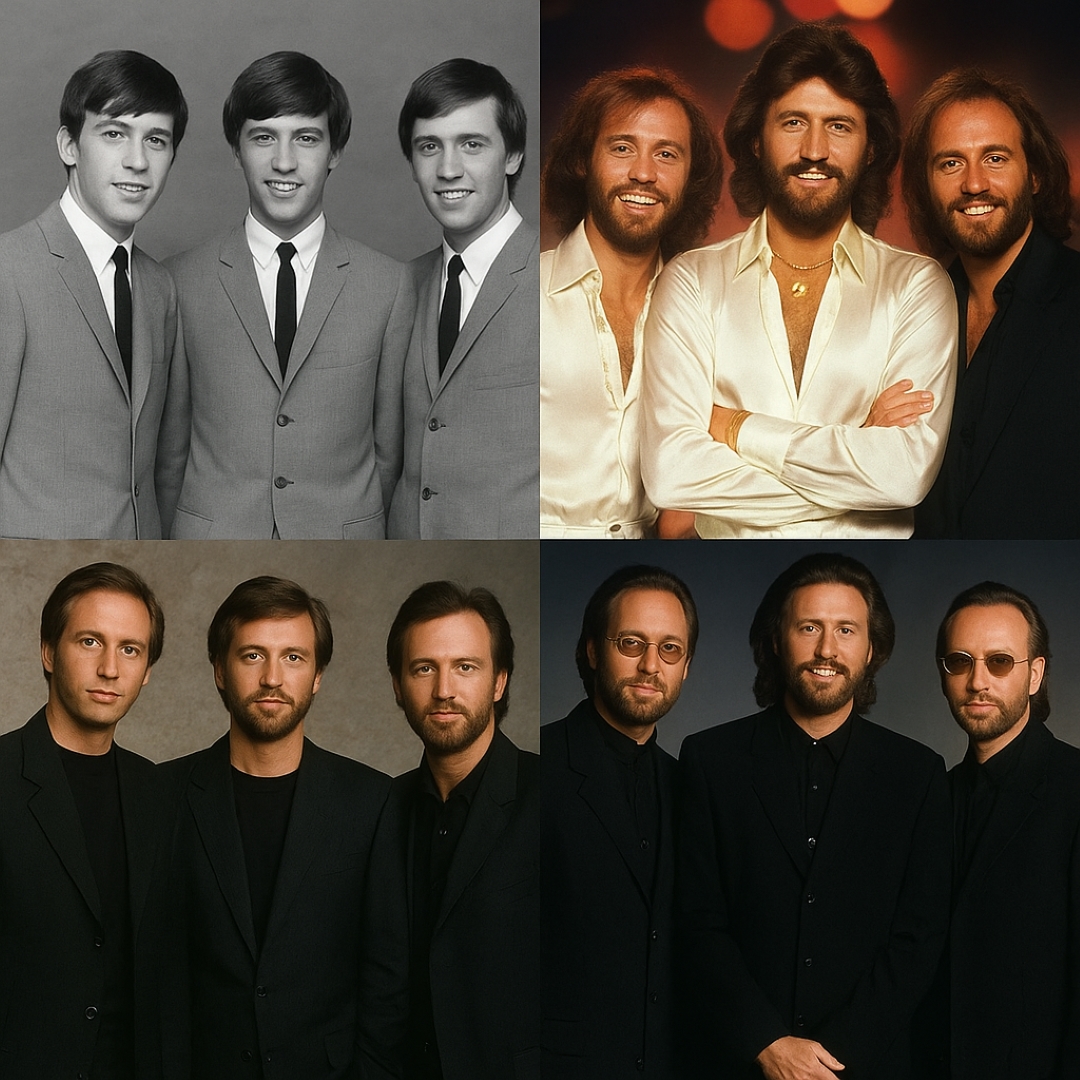🎙️ 1960s – The Clean-Cut Teenagers with Suits and Folk Haircuts
When the Bee Gees arrived in England in early 1967, most people didn’t know they were brothers. Their matching gray suits, modest ties, short side-parted hair and polite smiles made them look like any other British beat group. They were still teenagers — barely out of school — and their visual style mirrored that youthful innocence.
You can hear that same purity in the vocal harmonies on “To Love Somebody” (1967), a gentle soul-influenced ballad sung with clean tone and a touch of vulnerability.
At this time, they were still trying to fit in with the British Invasion. Their fashion was restrained. Their stage presence was quietly formal. No chest hair. No silk. Just three boys singing in perfect harmony.
Nobody had any idea that by the next decade, those same boys would be practically glowing under a disco ball.
💫 1970s – From Ballads to Disco Kings (Curls, Silk Shirts & Chains)
The 1970s transformed everything. Their once-tidy hair grew into thick, luxurious curls. Their tailored suits gave way to unbuttoned silk shirts, wide collars, slim trousers, and gold chains. This was not a small aesthetic tweak — it was a full reinvention.
They didn’t look like British folk singers anymore. They looked like the embodiment of disco.
The shift matched the sound. Starting with “Jive Talkin’” (1975) and exploding with “Stayin’ Alive” (1977), the Bee Gees left behind orchestral pop and embraced groove, rhythm and falsetto. When you watch them perform on television in white jumpsuits and flared pants, they don’t look like the Bee Gees of the ’60s at all — but like a brand new band raised in Miami dance clubs.
⚡ 1980s – The Polished Adult Contemporary Era (Trimmed Beards & Blazers)
By the early 1980s, disco was dead — and so was the silk-shirt look. Instead of chasing a dying trend, the Bee Gees reinvented themselves again. Out went the chains and open chests. In came tailored blazers, simple black shirts, darker trousers, trimmed beards and shorter hair.
They now looked like sophisticated adult contemporary singers — more serious, more refined.
Their 1987 comeback single “You Win Again” captures the moment. The music video shows them in dark coats and soft lighting — no glitter, no mirrorballs — reflecting a more mature, introspective sound. It was still unmistakably Bee Gees, but the visual language had changed completely.
🌙 1990s – Legacy Phase (Long Coats, Monochrome & Minimalism)
In the 1990s, the Bee Gees weren’t chasing trends anymore — they were the trend. They embraced a darker and more minimalist look: long black coats, monochrome outfits, slicked-back hair and subtle sunglasses.
It almost looked like an entirely different band — part rock, part elegant singer-songwriter collective.
Their 1997 single “Immortality” (written for Céline Dion and released as a duet) captures this phase perfectly. They appeared dressed in all-black, standing with quiet dignity like living monuments of pop history.
This was the final version of the Bee Gees: three survivors, dressed not for the dance floor but for legacy.
